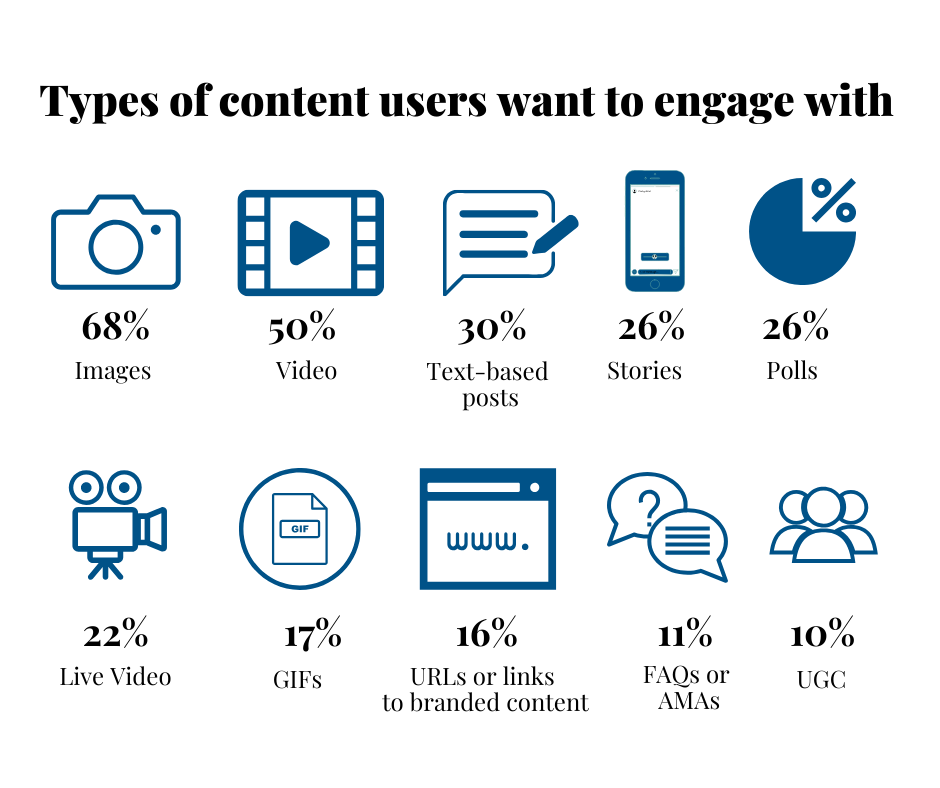Three Bad Habits Hurting Your Social Media Program
In B2B marketing, social media often plays the role of the first impression for businesses to establish trust. This blog post shares how you can make your digital first impression count in 2023 by changing three habits.

It’s been said that you have 10 seconds to make a good impression, which is especially relevant if you are a user of any social media channel. In B2B marketing, social media often plays the role of the first impression for businesses to establish trust. This blog post shares how you can make your digital first impression count in 2023 by changing three habits.
I am a passionate believer in the power of social media marketing — and it should be loved.
Unfortunately, given the state of social media today, most people don’t feel that way. We install ad blockers, pay for ad-free accounts, or hit the “unfollow” button gleefully. The dominating narrative is — and has been that social media marketing is annoying and should not be trusted. Why? Too often, social media marketing is purely self-promotional instead of bringing value.
Let me put this up first — if you want to be a part of this ever-buzzing world of social media, your content needs to deliver value, whatever posting time, category, or creative format.
Today, we explore some of those bad social media marketing habits and the different ways you can fix them. Keep reading!
#1 Pursuing the latest vs. the relevant content
Engaging social media posts are not always about new, new, new.

Someone once said that social media managers will flock to any successful tactic or trending topic until they kill it because most of them have this “hashtag-driven” mindset that they always need to pump out more and more fresh content. If they cannot leverage at least one trending hashtag in the content, then the implication is that they are failing at their jobs. Maintaining that steady barrage of “timely” content for social media is taxing but unnecessary. Here is why:
- 📆 While you may want to work overtime to be a part of every trend on social media, you don’t have to. Unless your followers regularly check your account page for updates, they have no idea what came out yesterday.
- 🔖 A 3-week-old topic can still be relevant, educational, or entertaining to your audience. Whether it’s three weeks or three months old, the first time your customer sees it, it’s FRESH to them. It’s also possible that something you created a year ago is more relevant and relatable today. Repurpose old content in creative ways, so they remain fresh.
- 💭 Especially when you facilitate a complex B2B buyer’s journey, repeating the key marketing message can be critical. For instance, if your target audience already knows what problems to solve and is reviewing different options. A “reminder” post can help customers remember that they like your products. It’s crucial to stay at the forefront of your audience’s mind. In the world of sales, 80% of sales need 5 follow-ups after the initial conversation.
- If a previous post engages well with your audience and is still relevant, why not bring it back? Repurpose old content in creative ways, so they remain fresh.
This isn’t to encourage you to wish people a ‘Happy New Year’ in March. It’s about focusing on how to leverage social channels to deliver helpful information to guide your audience through a journey.
#2 Organizing your posts by format
Most brands organize their content by format, such as blog posts, eBooks, datasheets, videos, webinars, infographics, etc.
However, format buckets are often counterintuitive to how people search for content. Let’s be honest, when was the last time you searched some new concept on Google and said, “I am going to learn about this terminology by only watching a video,” or “I will only be able to understand it by reading an eBook”? Probably never, I am guessing. There’s simply no reason to jump through different buckets to find the information you need. 99% of us don’t care what format it is so much as we want to find an answer to our problem or question.
Sorting your content into format buckets can also lead to clearer analytics results. In my experience, I often got requests like: “Post more short videos because they have higher engagement rates” or “Don’t post webinar promotions because the click-through rate is low.” Based on the performance of different formats, your data-driven people usually get recommendations like the below:

While statistically, it is correct, it shouldn’t be your rule of thumb. As a social media manager, it’s more important to figure out which pieces of content are needed to guide someone through a long-time engagement with your brand. Which channels are those engagements going to take place in? What content do you want to present? Then finally, what is the correct format for that content? Is it better served as a video? Or do more details need to be explained in a blog post? Or do you want to impress your customers with a rich infographic? Will your customers be interested in downloading an eBook to learn more? Depending on your communication needs and the channel features, any one (or more) of these formats is acceptable.
People are going to come across your company in many ways. Thinking out of the “format bucket” allows variance and a more seamless and customized user experience. The point is there is never a winning content format on social media. As long as people can contextualize your content in a way that makes sense to them right out of the gate, they will seek out your brand as a trusted authority.
#3 Ignoring User Experience
For a long time, I was told as a digital marketing manager, conversion stood above all “vanity metrics,” i.e., impression, engagement, mention, and follower. Don’t get me wrong, your leads goal is crucial, but only when it considers user experience. If we ignore how people consume social media content, we do so at our peril.
You are probably dealing with many frustrating content experiences in your own life. For instance, checking out a Twitter page about recipes quickly becomes an annoying experience. First, challenges as simple as finding the ingredient list could drive you nuts if the landing page is not mobile-friendly. Then the page is full of hyperlinks, leading you to unrelated 3rd party sites. Finally, when you’re ready to start cooking, it asks you to fill in your contact information to download the recipe. The last thing people want to do on mobile is to download random PDF files. All this leads to an “unfollow.” Be assured the same is happening if your content experience is not designed for user experience.
While I can go on and on listing out the bad habits standing in the way of taking your social media channel to the next level, the three listed here are the big ones I have struggled with for a long time. That’s why I love social media — it keeps evolving and helps me become a better communicator focusing on the audience and their experience. And that makes a big difference.

